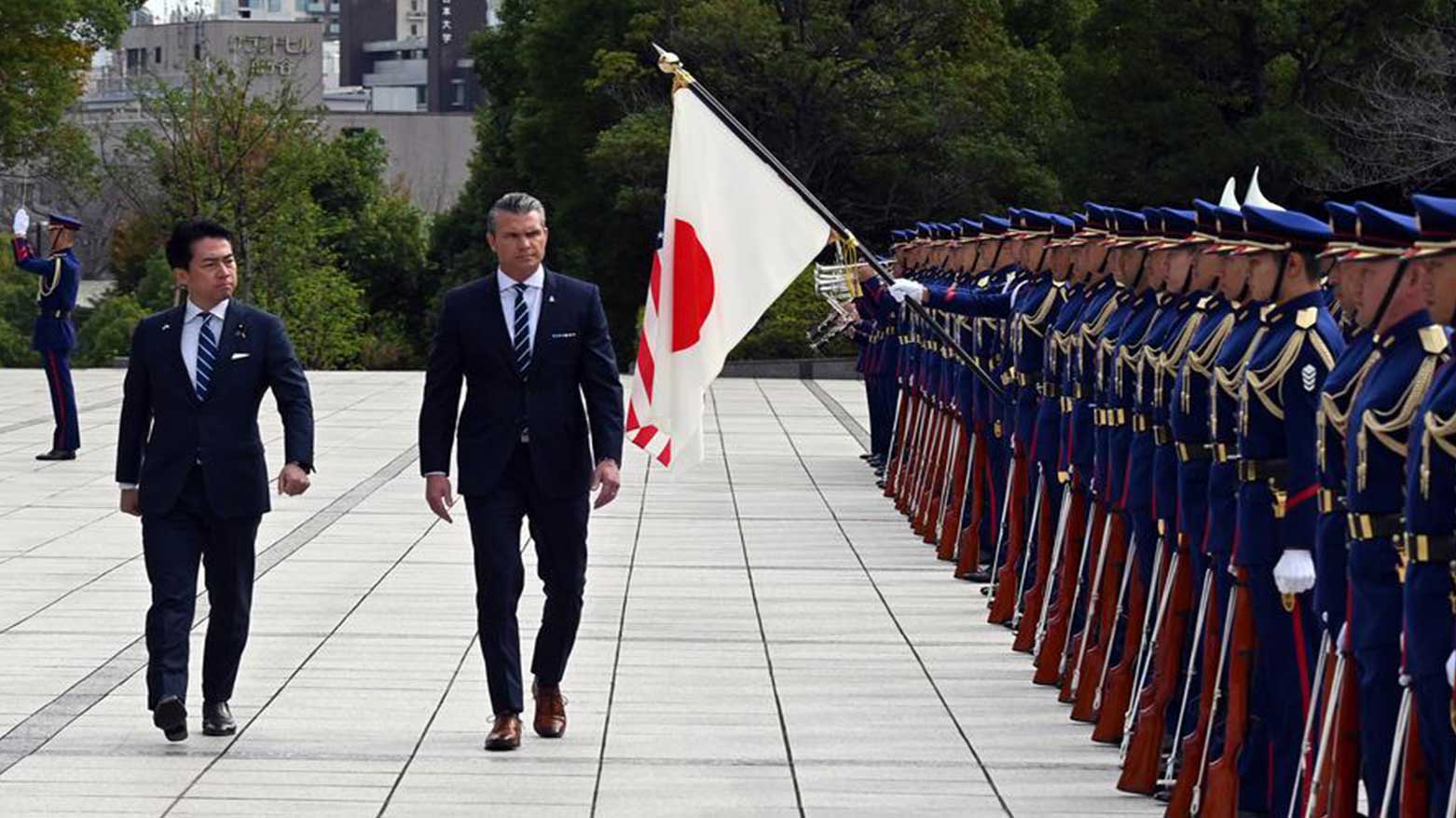U.S. and Japan Move to Next Phase of Joint Command Upgrade Amid China’s Expanding Power
“There’s no substitute for hard power,” U.S. War Secretary Hegseth said. “To increase our strength, we are going to invest now and invest quickly while we still have time.”

ERBIL (Kurdistan24) — U.S. War Secretary Pete Hegseth announced on Wednesday that U.S. Forces Japan (USFJ) has completed the first phase of its transformation into a joint force headquarters and is ready to advance to the next stage of reorganization — a move marking a major step in strengthening the U.S.-Japan military alliance amid rising regional threats.
Speaking at Japan’s Ministry of Defense in Tokyo following talks with his Japanese counterpart, Defense Minister Shinjiro Koizumi, Hegseth said, “This important change will improve our warfighting capabilities, our lethality, and our readiness. All phase one personnel are in place, and we are ready to begin phase two shortly.”
The restructuring is part of a broader effort by Washington and Tokyo to bolster joint defense capabilities in response to China’s growing military assertiveness in the Indo-Pacific.
Beijing now operates the world’s largest navy and frequently conducts maneuvers near Japanese waters, sometimes in coordination with Russian forces.
Japan, meanwhile, has been fortifying its southwestern islands with missile defenses — areas seen as potential flashpoints in any future Chinese attempt to seize Taiwan.
“China’s unprecedented military buildup and its aggressive military actions speak for themselves,” Hegseth warned, standing beside Koizumi at the Ichigaya headquarters.
The upgrade of USFJ from a liaison and coordination command to a fully operational joint command was first announced by Hegseth during his inaugural visit to Tokyo in March.
His predecessor, Lloyd Austin, initially set the plan in motion in mid-2024 as part of efforts to modernize the U.S.-Japan alliance and enhance regional deterrence.
USFJ commander Lt. Gen. Stephen Jost described the initiative as “a monumental task,” explaining that it involves transitioning from a body focused mainly on alliance management to one capable of “integrating and synchronizing operations across the full spectrum — from humanitarian aid and disaster relief to high-intensity armed conflict.”
Hegseth praised Japan’s recent decision to significantly increase its defense budget — part of Tokyo’s historic policy shift toward a more proactive military posture under Prime Minister Sanae Takaichi.
“There’s no substitute for hard power,” Hegseth said. “To increase our strength, we are going to invest now and invest quickly while we still have time.”
The remarks came a day after Hegseth addressed more than 6,000 U.S. troops aboard the USS George Washington aircraft carrier at Yokosuka Naval Base, home to the U.S. 7th Fleet, ahead of a bilateral meeting between President Donald Trump and Prime Minister Takaichi.
Earlier that morning, the two leaders signed new defense and critical minerals agreements aimed at deepening economic and security ties.
“The sight of American and Japanese troops standing shoulder to shoulder at Yokosuka reflects the strength and depth of our alliance,” Hegseth said.
“The 55,000 U.S. troops stationed in Japan, alongside Japan’s Self-Defense Forces, stand ready to defend both our nations.”
During their hour-long meeting, Hegseth and Koizumi discussed future command and control structures and the need to expand U.S. and Japanese military coordination in the country’s southwest.
“Secretary Hegseth and I share responsibility for implementing this transformation,” Koizumi said, reiterating Prime Minister Takaichi’s view that the U.S.-Japan partnership remains “the world’s greatest alliance.”
Hegseth’s visit to Tokyo is part of a broader Asia tour with President Trump, which will conclude in South Korea — underscoring Washington’s commitment to reinforcing alliances as the Indo-Pacific becomes the central stage of global power competition.
The reorganization of U.S. Forces Japan marks not just a structural shift but also a strategic message: that the U.S.-Japan alliance is adapting rapidly to meet 21st-century security challenges, from China’s military rise to regional instability — ensuring that the balance of power in the Pacific remains firmly anchored in collective defense and deterrence.
